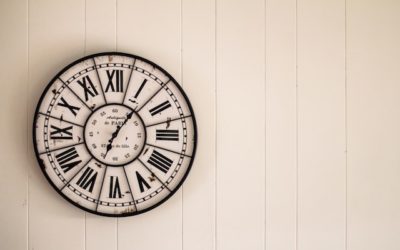When working with clients, I often encounter a seeming paradox.
On one hand, I encourage them to experience discomfort in a very overt and direct way.
I sometimes describe myself as an “emotional pain tolerance coach”, essentially supporting clients as they sometimes experience the most discomfort they have ever felt in their life. Although rooted in emotion, this pain can manifest physically, feeling like twisting, tightness, burning, sharpness, and more.
I sometimes liken the process of emotional release to an exorcism, as we writhe and stretch to release our inner demons.
I see my role in this process as providing a safe space and encouragement for people to explore the extent of what they are capable of, pushing themselves to go further emotionally than they thought was possible; helping them overcome the fear of looking darkness in the face and diving backwards off the edge of a metaphorical cliff.
Of course on the other side of all this is bliss, amazing colors, creativity, and feeling of physical and emotional expansiveness. It’s the closest thing to a drug trip without doing drugs, but you’ve gotta go through the pain to get to the other side: the only way out is through.
And on the flip side, I preach effortlessness. I encourage clients to stop trying. To just relax. Let it happen. We spend the beginning of each session relaxing body and mind, and that sets the tone for the rest of the work.
So much of personal growth is getting out of our own way. Letting our body heal itself. Let our inner voices tell us what our deeper truth is. As much as I find the saying hilarious, “have you tried not trying?” is often one of the best pieces of advice we can give ourselves.
So how do we reconcile the two? How do we combine pain and effortlessness?
I think there are a few things going on here.
It hurts without trying
Firstly, we wrongly assume that pain comes from effort. You’re doing something difficult, and you’re in pain. In reality, most of us are in pain as a state of being. Pain is a given, and we often do whatever we can to try not to feel it, numbing it with distractions ranging from social media to work to addictive behaviors. To me, a lot of ADHD’s compulsive activity is a desperate attempt to escape the present moment.
When we choose to give pain our full attention, it suddenly comes into sharp focus. Moreover, giving it space and permission often allows it become even bigger, as the part of our body is finally allowed to express just how pained it actually is (often, shortly thereafter, there comes a great relief from the pain as it runs its natural course and releases itself, but I’m not here to sugarcoat reality. This isn’t instagram, you know).
So that’s the first thing. There’s no need for massive action or for something to be happening to feel pain, it’s actually when nothing is happening that we often feel it the most.
The pain of innaction
The second layer is that inaction itself can be very uncomfortable to us. As we go through life, we are taught, either by society or by trying to survive traumatic incidents, that we must take action to save ourselves. Take action to save our souls, to redeem our self worth, to salvage the shitty situation we’ve found ourselves in. Over years this becomes habit, the only way we know how to be.
In reality, what we need to do after being forced to take “massive action” to survive, is give ourselves a massive break. But no one tells us this, and often we don’t have the luxury of doing so, and so the frantic activity continues.
Corporations love solving problems by throwing more people at them. Working harder instead of smarter. And we often operate that way in our own life. Trying to use brute force to get where we want to go. This is almost always futile, and results in all parties, the forcer and forcee, to merge just as stuck and a lot more bruised.
In Summarium
All this to say, that inactivity itself can be painful. We want to feel in control, and here we’re being asked to surrender to a process. We want to get up and fix the situation now, goddammit, and instead we’re being asked to lie back and watch nature take its own natural course.
So to the degree that you find it difficult to relax, I must admit that yes, you’re in for some hard work during a typical session. But we’ll need to call it working hard at hardly working, as you let pain be your guide as to what you most need to not be doing.



